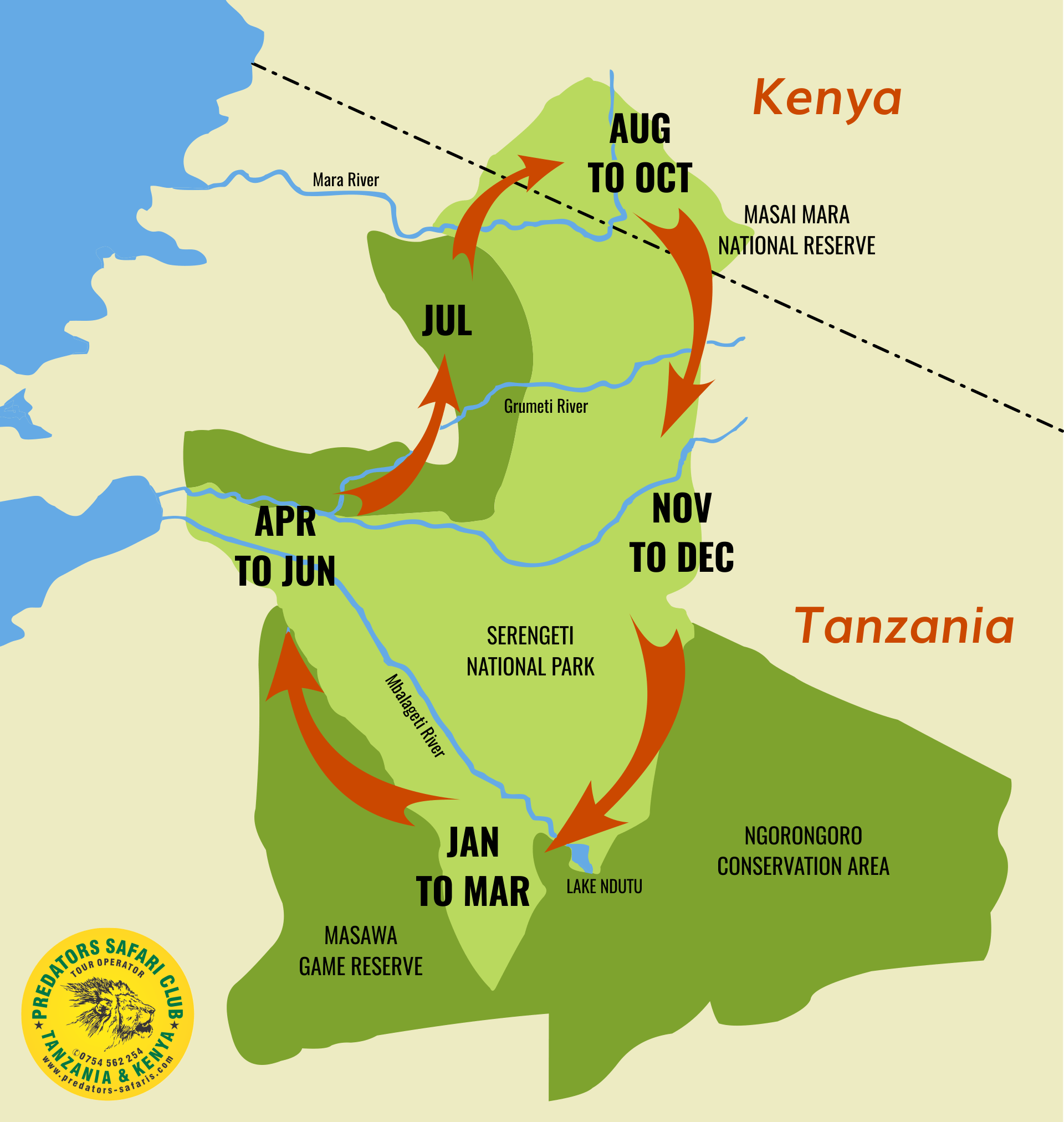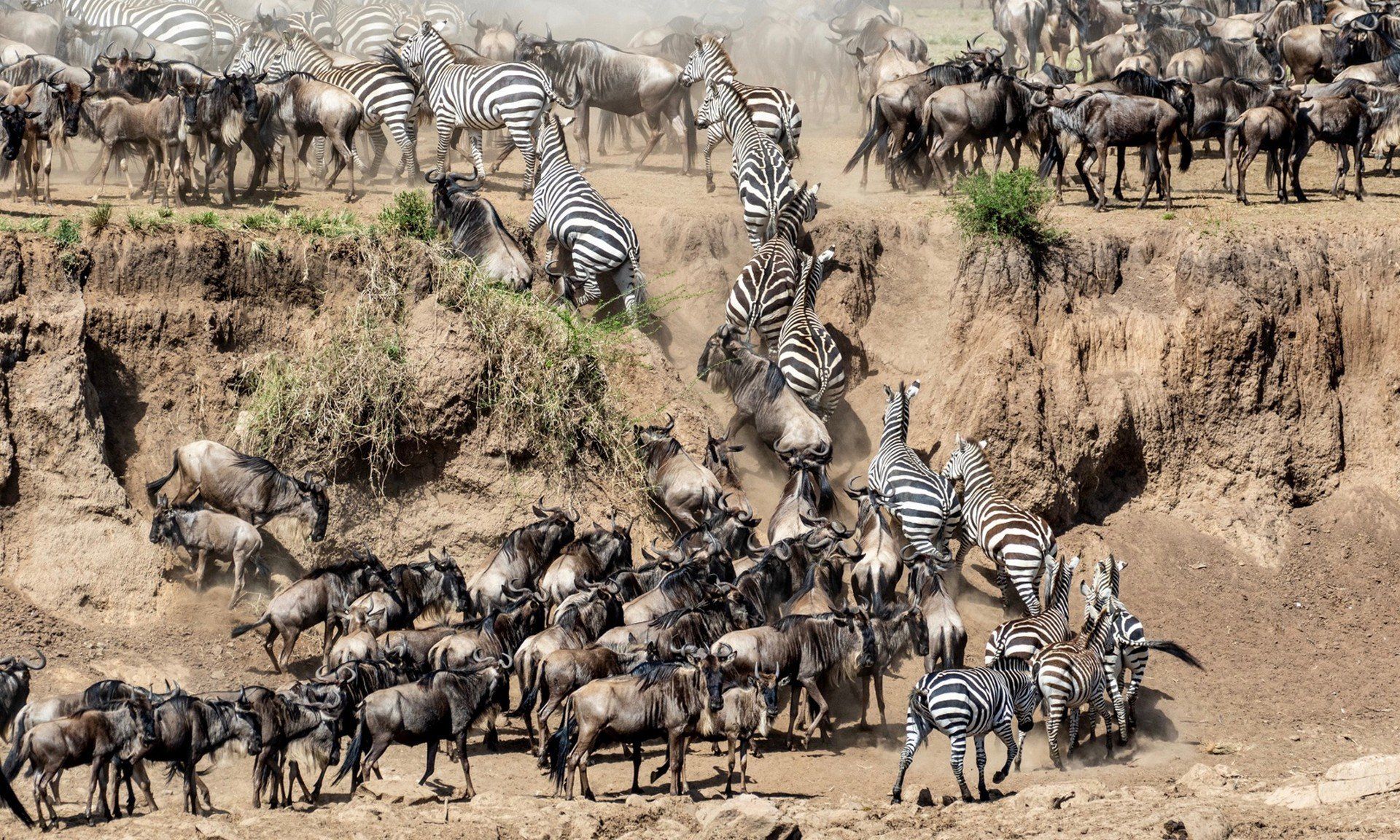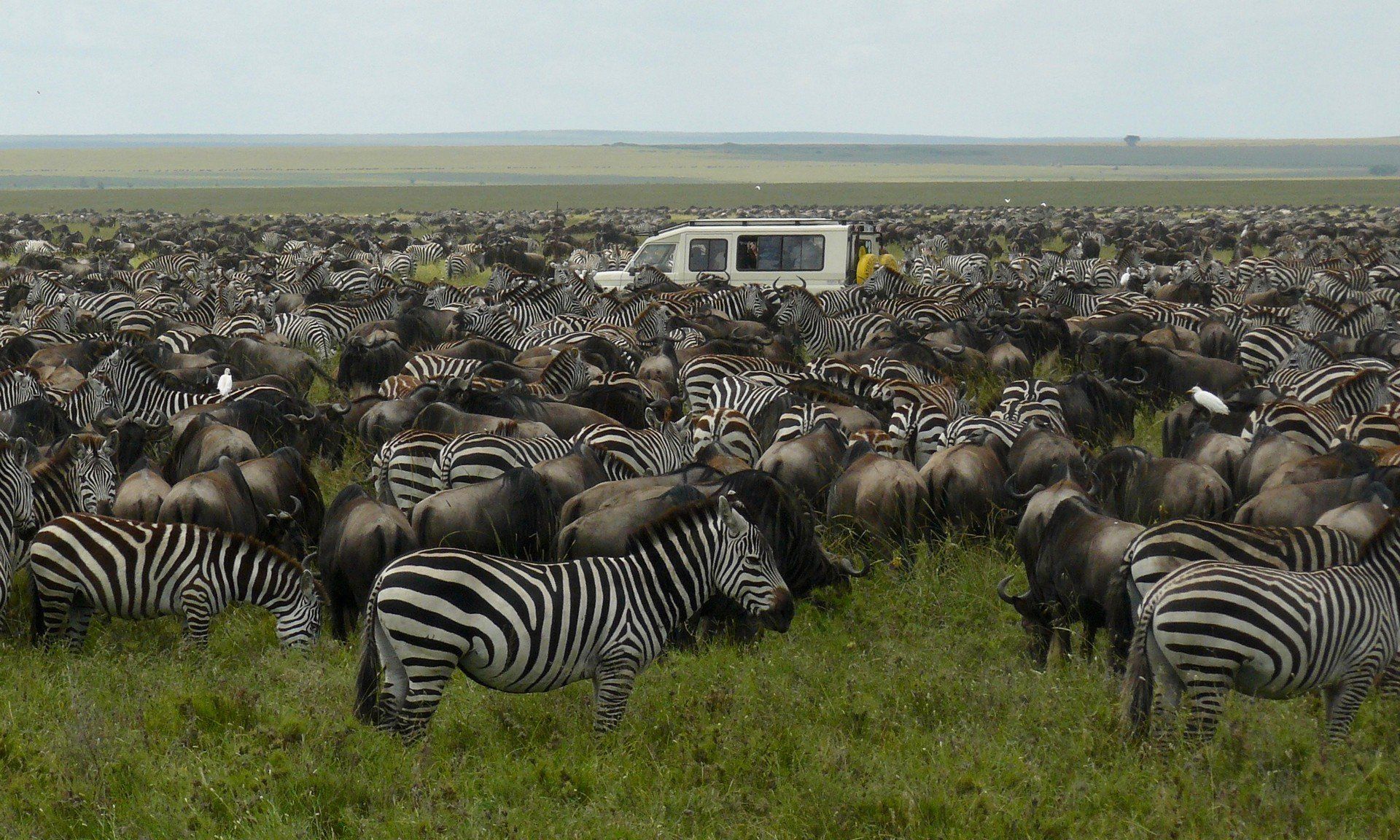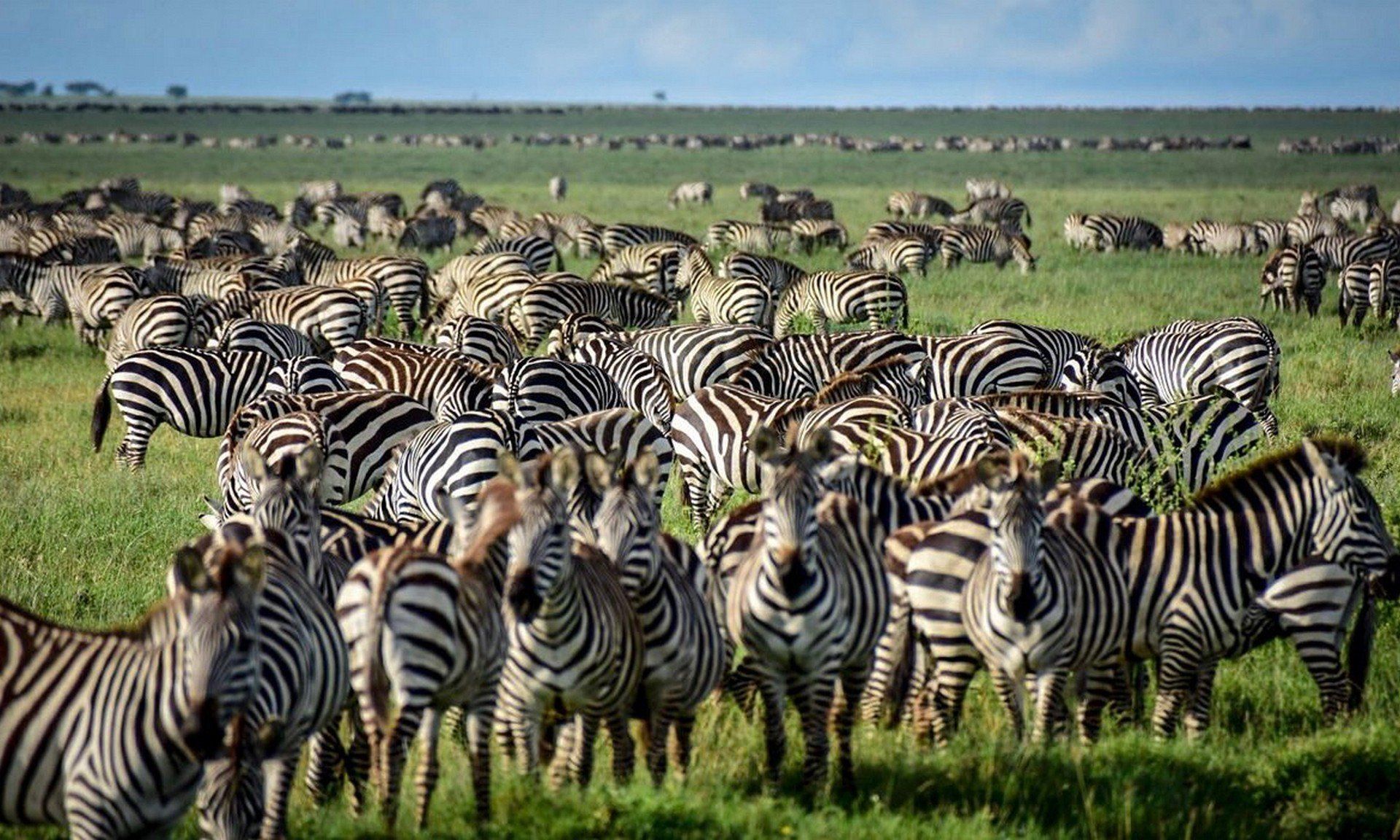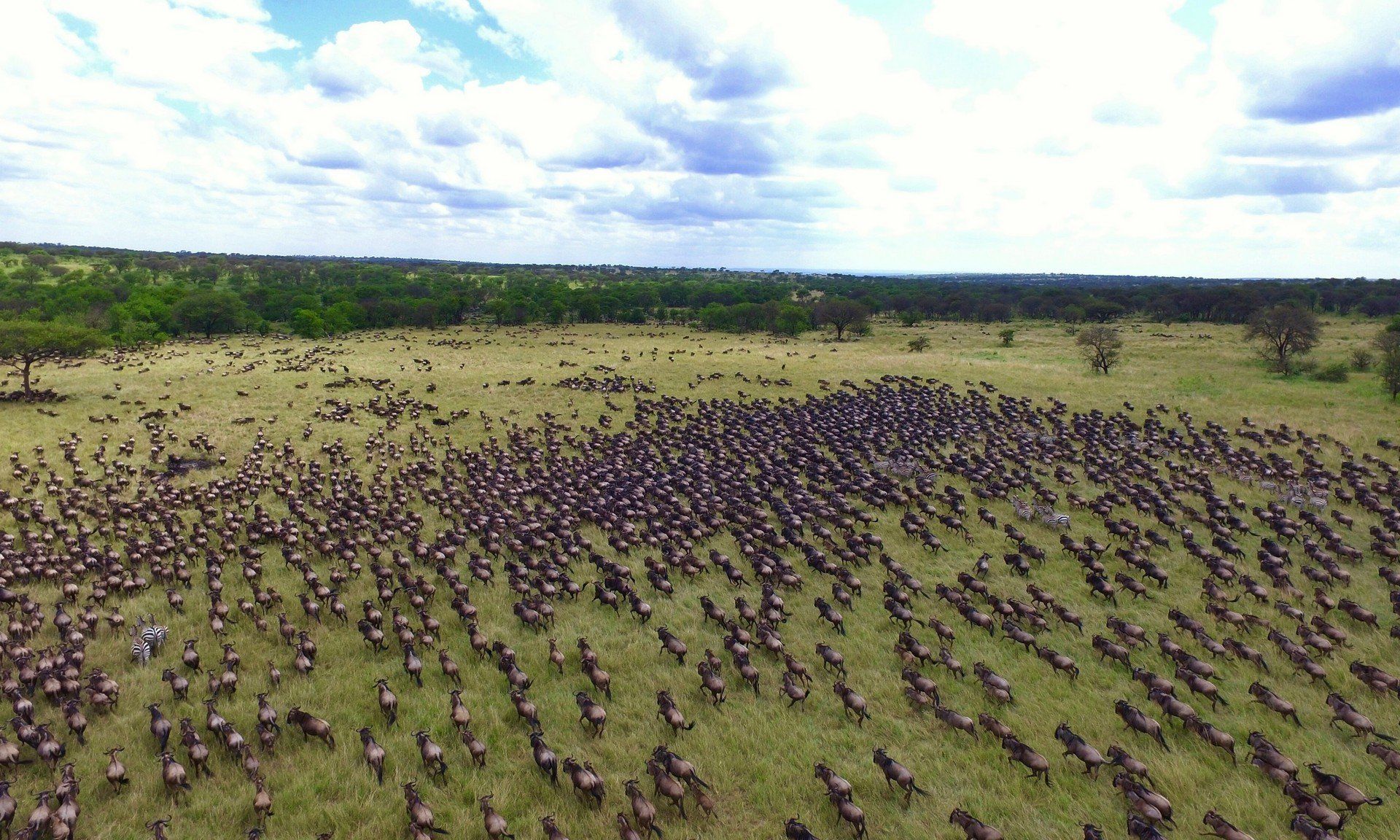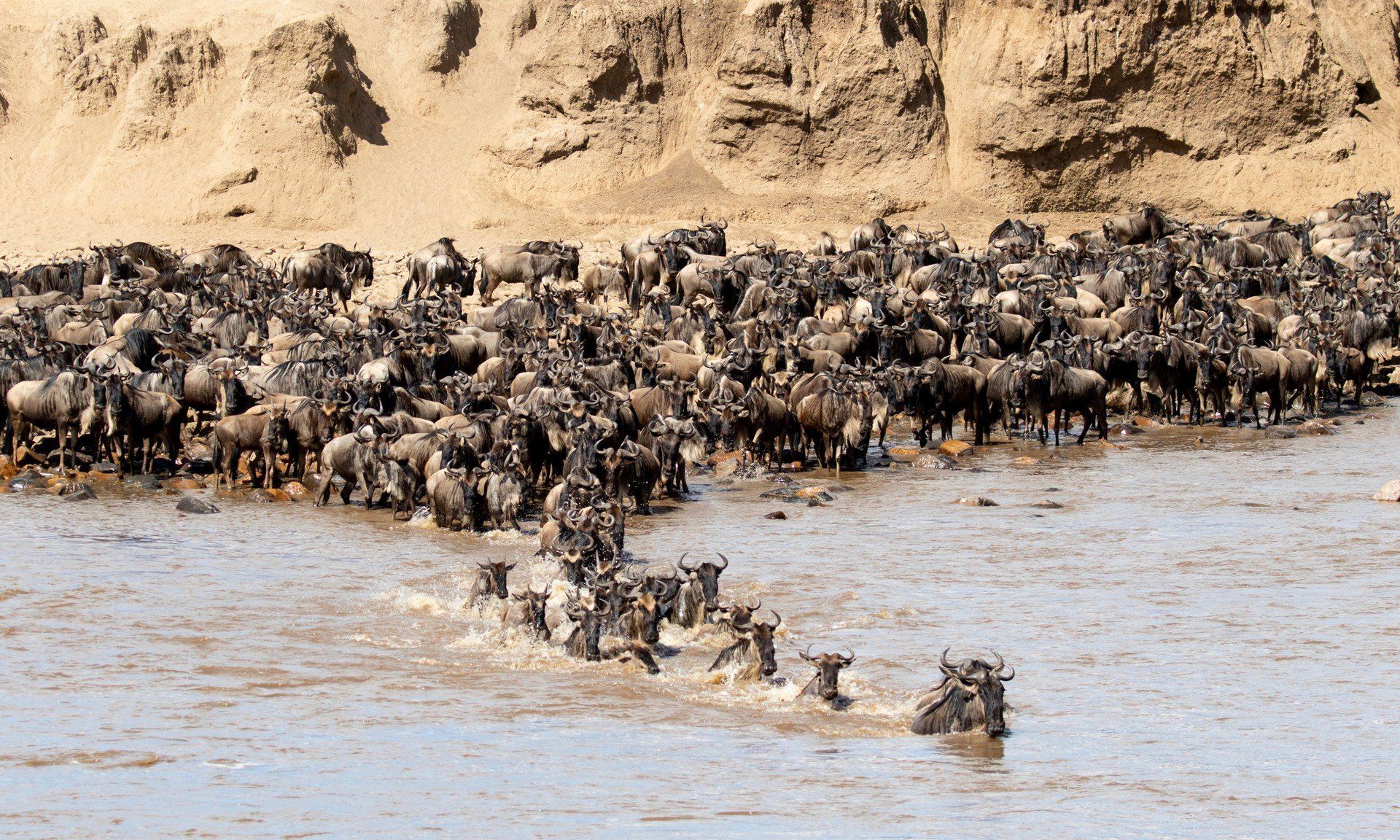WILDEBEEST MIGRATION
WILDEBEEST MIGRATION
The Serengeti-Masai Mara ecosystem stretches over 24,000 sq. km of land with the Serengeti in Tanzania and the Masai Mara in Kenya.
WHY THE MIGRATION OCCURS
Animals migrate because of rain or the lack of it. When a seasonal drought dries up grass and water supplies in a particular area, the grazing animals move on to the next area along the migration route where seasonal rains are falling.
THE MAJOR MIGRATING ANIMALS
Currently, an estimate of two million wildebeests participates in the migration. Hundreds of thousands of zebras and Thomson's gazelles join them. Although lions and other carnivores do not migrate with the grazing animals, they feast on them when their paths cross.
KNOW THE PATH AND SCHEDULE OF THE MIGRATION
The highlight of an African safari is to experience the annual migration. While they do their best to look purposeful, the herds don't travel directly, but instead, meander in a vaguely clockwise direction moving between the patches of fresh green grass that emerge in response to localised rain showers. The herds reach the 1900 km oval circuit with two things in mind: food and water.
THE MIGRATION PATH
December – March (Ngorongoro Conservation Area & Southern Serengeti)
Highlight: calving season
Vast herds of wildebeest spend the short rain season in the volcanic open plains below the Ngorongoro Crater and in the southern part of the Serengeti where the grass growth is most productive and nutritional. This area is the starting point for one of the great wonders of the world: the Serengeti Annual Migration. As the sea of grass provides little cover, the young are easy pickings for a variety of predators. Wildebeest have synchronized birthing, which means that about 90% of calves are born within a three-week period. With such a sudden and massive surge of available food, predators do not make any significant dent in the new born calf population. Wildebeest calves can run minutes after they are born and within three days, they are strong enough to keep up with the herd.
April – May (Central Serengeti & Western Serengeti)
Highlight: Seeing the herds on the plains
As the grass gets depleted in the Southern Serengeti, herds move to the plains and woodlands of the Central Serengeti. The mortality rate is quite high due to injuries and fatigue, motivating large numbers of griffon vultures to follow the herds on their journey. The area around Moru Kopjes and the west of Seronera soon becomes a hectic scene of moving columns, often containing hundreds of thousands of wildebeest. They are joined by many zebras and a scattering of Thompson's and Grant's gazelles.
June (Western Serengeti)
Highlight: Scenes of the Grumeti River
The Grumeti river is northwest of the short grass plains. This watercourse is their first real obstacle and gigantic Nile crocodiles (up to 6 metres in length) are waiting for the hesitant wildebeest to stumble at the crossing. Their livelihood is inextricably linked with the great migration. Moving with surprising stealth and speed, they prey upon the thirsty herds as they drink and aim to cross the river. All is far from peaceful, for it is the rutting season and each male try to establish his stamping ground. After moving westwards, the migration divides by some uncanny instinct, one group turning northeast and the other due north. It is very difficult to predict river crossings in the area and you may miss it if the migration is early or late.
July - August - September - October (Northern Serengeti and Masai Mara)
Highlight: River crossings
Following the rainfalls, the migrating animals move north and will stay in the Masai Mara National Reserve and the Northern Serengeti. Nothing stops the stampeding hordes. Tempted by greener pastures, the wildebeest arrive at the Mara River around July and cross over onto the Masai Mara plains. During these four months many animals cross and re-cross the Mara River several times following periodic rain showers. Crossing points form bottlenecks in which thousands of animals perish through trampling or drowning. Not surprisingly, hyenas, lions, leopards, crocodiles and even cheetahs capitalize on this glut of fresh meat. Typically, the wildebeest remain in the Masai Mara until October when they start returning to the Southern Serengeti.
November (Southern Serengeti)
Highlight: Seeing the herds on the Serengeti plains
The army of animals return southward to the replenished grasslands of the southern Serengeti, thereby completing the migratory cycle.
The migration is rarely ever precisely the same in terms of timing and direction, as local conditions influence grass growth. It might happen that the wildebeest start moving away from the open plains earlier in some years and remain in the northern woodlands for longer in others. But as our guides say, “We trust Serengeti”. You can trust the Serengeti to open the treasure chests of Africa to show you transcendent beauty and abundance like nowhere on earth.

